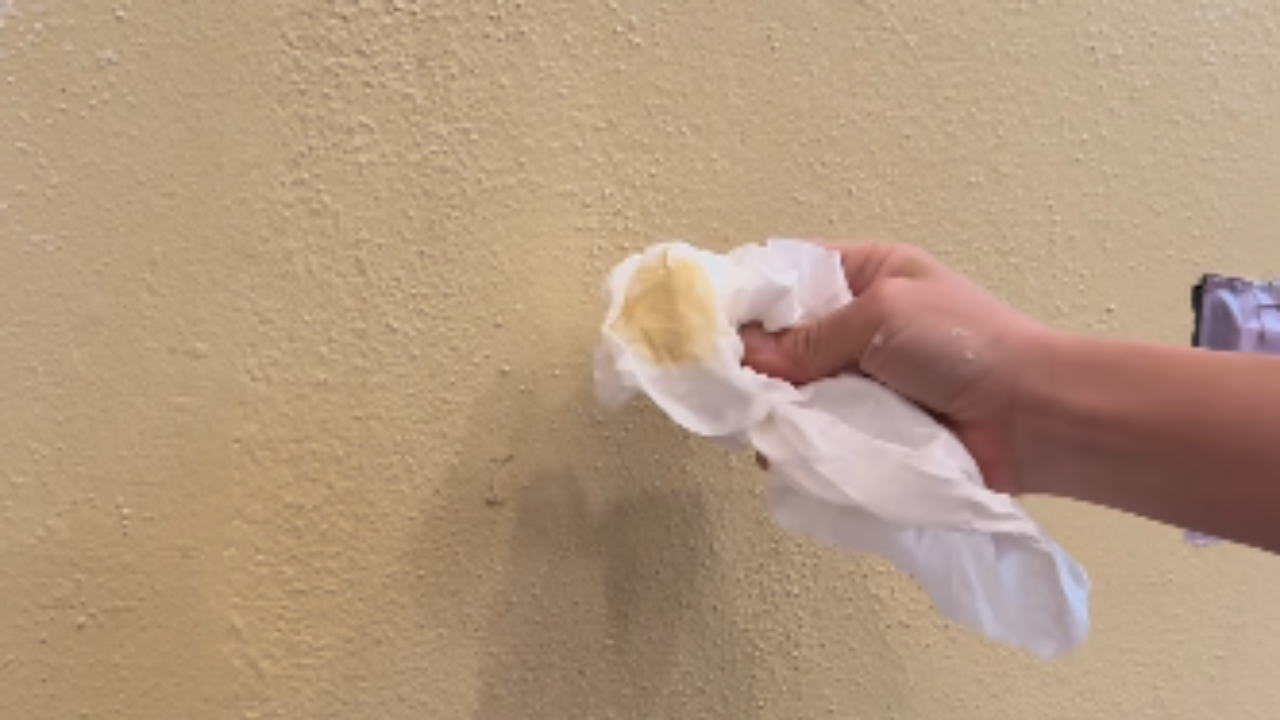
How to Determine if Your Walls Have Latex or Oil-Based Paint (And Why It Matters!)
Learn how to stain furniture like a pro with this comprehensive guide! Discover tips for achieving a flawless finish and overcoming common staining challenges.
When it comes to home improvement projects, painting is one of the most transformative and rewarding tasks you can tackle. However, before you grab a brush and start painting, it’s crucial to know what type of paint is currently on your walls. Whether it’s latex or oil-based paint makes a big difference in how you prepare your surfaces and the overall outcome of your project. But don’t worry, determining your paint type is easier than you might think, especially with a simple acetone test.

Why does it matter if your paint is latex or oil-based? The type of paint affects everything from how the new paint adheres to your walls to the drying time and cleanup process. Using the wrong type of paint can lead to peeling, chipping, and a lot of frustration. Oil-based paints offer durability and a rich finish but come with longer drying times and more challenging cleanup. Latex paints, on the other hand, are easier to work with and clean up, but they might not adhere properly to surfaces previously painted with oil-based paints without the right preparation.
In this guide, we’ll walk you through the steps to determine if your walls have latex or oil-based paint using acetone, explain why this knowledge is essential, and share some tips and tricks to make the process smooth and efficient. By the end, you’ll be ready to tackle your painting project with confidence, knowing you’ve set the perfect foundation for a beautiful, long-lasting finish. Let’s dive in and get started!
Supplies Determining if Your Walls Have Latex or Oil-Based Paint
- Acetone or nail polish remover containing acetone
- Cotton balls or soft cloth
- Mild detergent and water
- Sandpaper (optional)
- Safety gloves
- Safety goggles
- Mask
Instructions for Determining if Your Walls Have Latex or Oil-Based Paint
- Prep the area: Choose a small, inconspicuous spot on your wall. Clean this area with a mild detergent and water to remove any dirt or grease. Let it dry completely.
- Safety first: Put on your safety gloves and goggles. Acetone is a strong chemical, so it’s important to protect your skin and eyes. Also, ensure the room is well-ventilated or wear a mask to avoid inhaling fumes.
- Apply the acetone: Dampen a cotton ball or a soft cloth with acetone or acetone-based nail polish remover.
- Test the paint: Rub the acetone-dampened cotton ball or cloth gently on the cleaned area of the wall.
- Observe the results:
- Latex paint: If the paint softens, becomes sticky, or starts to come off onto the cotton ball or cloth, it’s latex-based.
- Oil-based paint: If there’s no reaction and the paint remains hard and intact, it’s oil-based.
Tips and Tricks
- For accurate results, test a few different areas of the wall, especially if you suspect there may be multiple layers of paint.
- Use a light touch when applying the acetone to avoid damaging the wall surface.
- Remember that glossy finishes may be trickier to identify. Be extra cautious and patient when testing glossy walls.
- If you have oil-based paint, you’ll need to prime the walls with a bonding primer before applying latex paint to ensure proper adhesion.
- Keep windows open or use fans to maintain good airflow when working with acetone.
Why does it matter if your walls have Latex or Oil-Based paint?
Knowing whether your paint is latex or oil-based is super important because it affects how you prepare and repaint your walls. Latex paint, being water-based, is easier to clean up, dries faster, and has lower fumes, making it more user-friendly. Oil-based paint, on the other hand, is more durable and better suited for high-traffic areas but requires mineral spirits or paint thinner for cleanup. If you apply latex paint directly over oil-based paint without proper preparation, it won’t adhere well and could peel or chip. Properly identifying the paint type ensures you use the right primer and painting techniques, resulting in a smooth, durable finish that lasts.

Can I paint latex over oil-based paint?
Yes, you can paint latex over oil-based paint, but it requires proper preparation to ensure good adhesion and a lasting finish. Start by cleaning the oil-based painted surface to remove any dirt, grease, or residue. Lightly sand the surface with fine-grit sandpaper to create a slight roughness, which helps the new paint adhere better. After sanding, wipe down the wall to remove any dust. Next, apply a high-quality bonding primer designed to adhere to glossy surfaces and oil-based paints. Once the primer is fully dry, you can paint over it with latex paint. This preparation ensures the latex paint will stick properly and provide a smooth, durable finish.
Leave a Reply
I create some affiliate links through the Amazon Influencer program and the LTK platform. Because of this, I have the ability to earn small commissions from some purchases that you make while using my links (at no cost to you!). I so appreciate your support.




